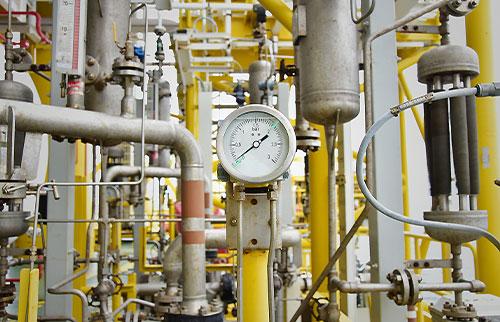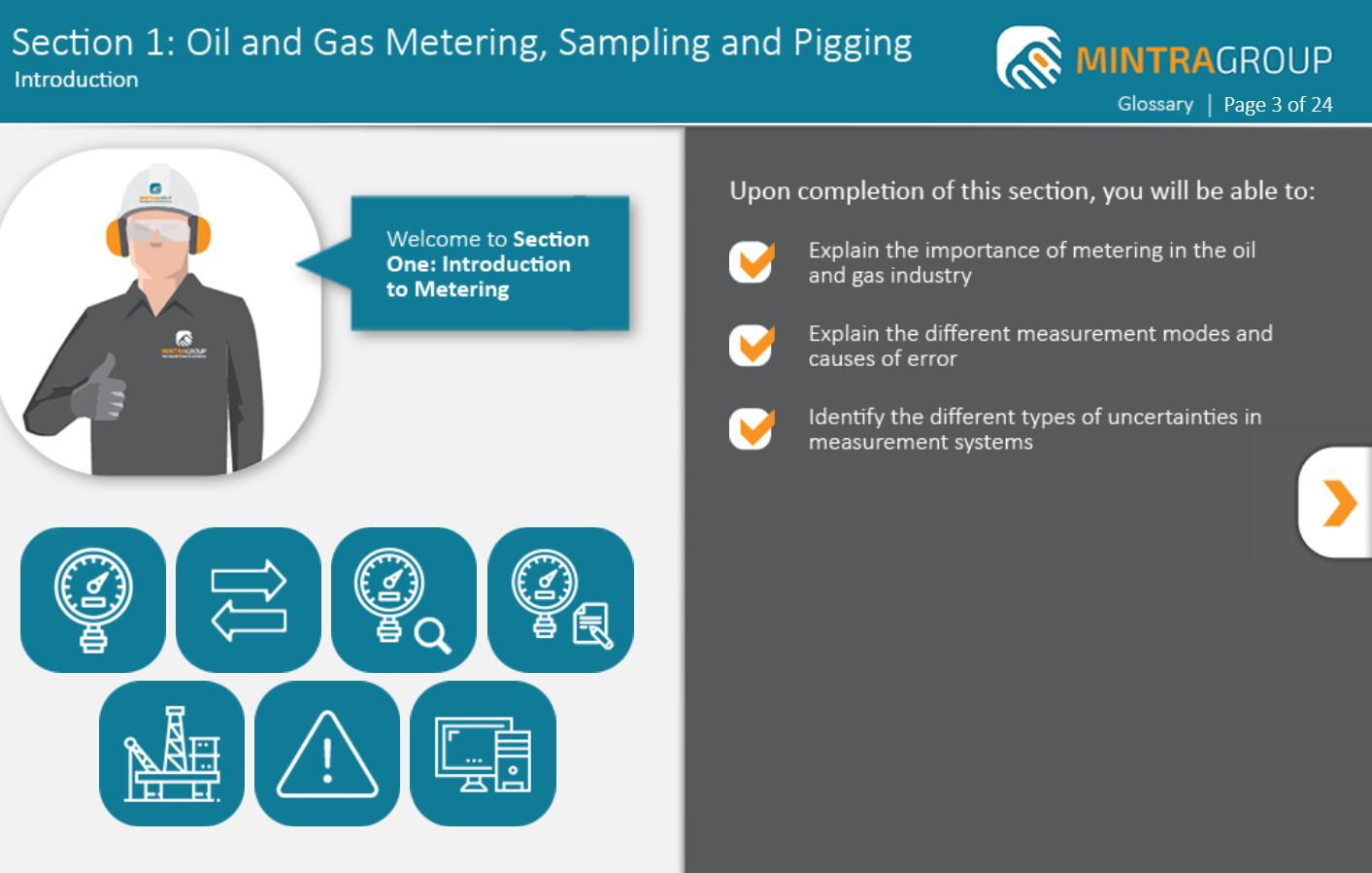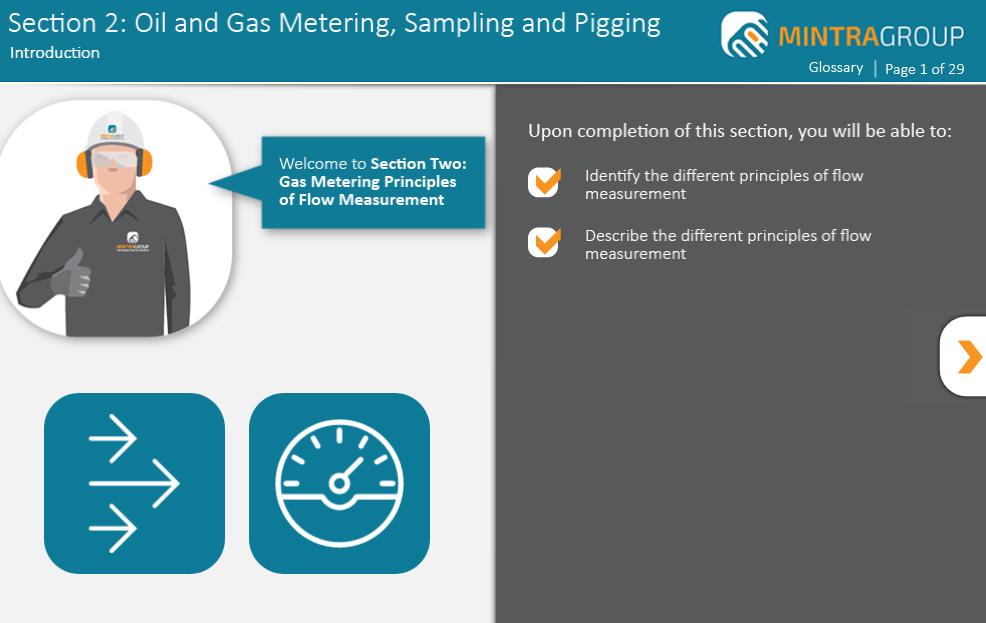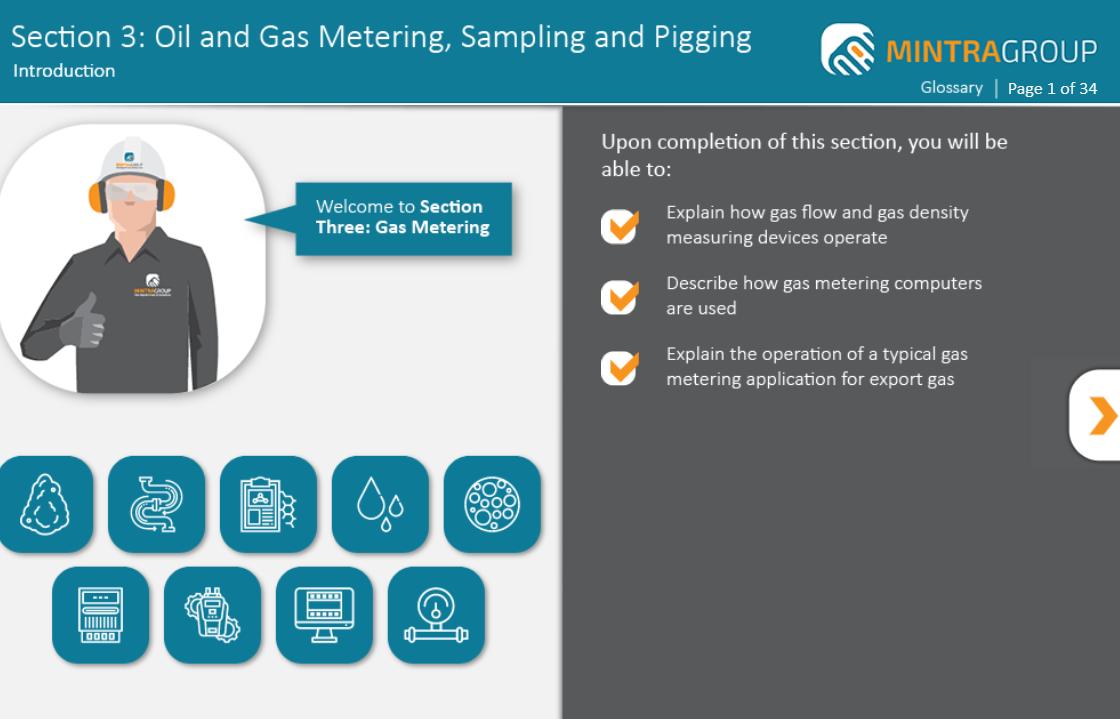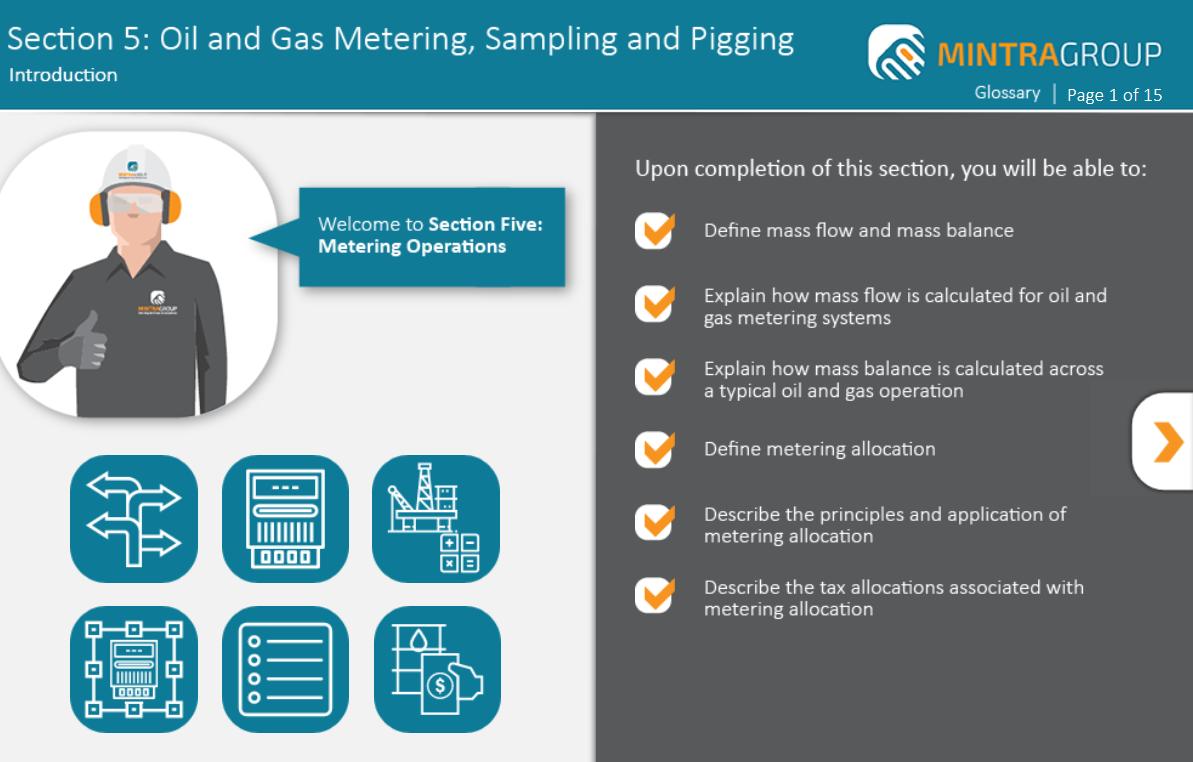Buy and assign to
multiple learners
Instant access
via email link
Instant certificate
via email
Further Information - Oil & Gas Metering, Sampling & Pigging Training
Description
Who is this course for?
This Oil & Gas Metering, Sampling & Pigging Training Course is suitable for all relevant personnel
Is previous experience required?
You do not need prior knowledge or experience to complete this course and it is assumed that you are competent in your designated role
How will this course benefit me?
This course aims to provide an overview of Oil and Gas metering, Sampling and Pigging
This course contains seven modules:
Module 1: Introduction to Metering
Module 2: Gas Metering Principles of Flow Measurement
Module 3: Gas Metering
Module 4: Oil Metering
Module 5: Metering Operations
Module 6: Sampling Systems
Module 7: Pigging
How will this course benefit my company?
To ensure you have an overview of Oil and Gas metering, Sampling and Pigging
What standards are referred to in this course?
The course is made according to industry best practice.
Is there an assessment?
Once you have completed the course, you will be asked a series of questions to check your knowledge and understanding. These are based on the learning objectives for the course and have a pass mark of 80%.
Learning Objectives
• Define metering
• Explain why flow is measured
• Identify the two main types of metering
• Explain briefly the two main types of metering
• Explain the importance of metering in the Oil and Gas Industry
• Explain the different measurement modes and causes of error
• Identify the different types of uncertainties in measurement systems
• Identify the different principles of flow measurement
• Describe the different principles of flow measurement
• Identify the principles behind gas behaviour and compressibility
• Describe the principles behind gas behaviour and compressibility
• Identify the characteristics of fluid flow
• Describe the characteristics of fluid flow
• Define Reynolds number
• Explain how Reynolds number is used to determine fluid flow characteristics
• Define the Bernoulli principle
• Explain how the Bernoulli principle
• Identify the gas flow and gas density measuring devices
• Describe the gas flow and gas density measuring devices
• Explain how gas flow and gas density measuring devices operate
• Define orifice plate metering
• Explain how orifice plate metering operates
• Explain the use of multiple stream applications
• Describe how gas metering computers are used
• Explain the operation of a typical gas metering application for export gas
• Identify the main liquid flow measuring devices
• Describe the main liquid flow measuring devices
• Describe the application and principle of operation of a range of liquid flow measuring devices
• Describe bi-directional and master meter provers
• Explain how bi-directional and master meter provers operate
• Identify the main liquid density and specific gravity measurement devices
• Describe the main liquid density and specific gravity measurement devices
• Explain how liquid density and specific gravity measurement devices operate
• Describe the usage of oil metering computers
• Explain how a typical oil metering application for export oil operates
• Define mass flow and mass balance
• Explain how mass balance is calculated across a typical oil and gas operation
• Define metering allocation
• Define the principle of metering allocation
• Identify the applications of metering allocation
• Describe the tax allocations associated with metering allocation
• Identify typical oil sampling methods
• Describe the typical oil sampling methods
• Identify the applications of the various oil sampling methods
• Describe the laboratory treatment and measurement applied to typical oil samples
• Define the term “pigging”
• Explain the purpose of pigging
• Identify the different types of pigs
• Identify the equipment used in pigging operations
• Explain the purpose of pig launchers
• Explain the purpose of safety interlocks
• Explain the operation of a typical pig launchers
• Explain the operation of a typical pig receiver
• Explain how to optimise pigging operations
• Identify typical pigging problems, causes and solutions
Assessment
Once you have completed the course, you will be asked a series of questions to check your knowledge and understanding. These are based on the learning objectives for the course and have a pass mark of 80%.
System Requirements
• Internet access - users will need a device with a web browser and internet connection
• System - runs on computers, tablets and mobile devices using Windows 7 and above and MAC OS devices running IOS 11 and above
• Browsers - Edge, Chrome, Firefox and Safari
• Minimum browser size - none
• Audio - requires device speaker or headphones
Recommended Courses
Reviews
Insights & News
At Mintra, we're so much more than just a team—we're a force driving innovation and excellence in maritime training across Europe.
We’re excited to be taking the stage at one of Europe’s leading showcases of organisational learning.
We are delighted to share the exciting news that our People and Culture team has been shortlisted for the prestigious cHeRries Awards!
